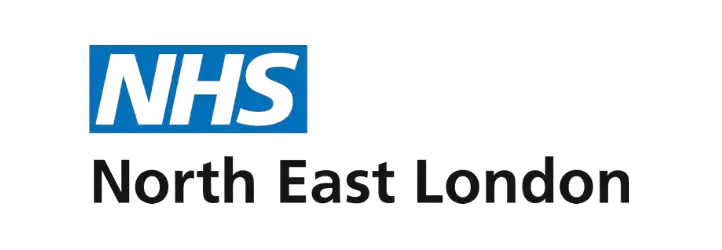Creating time
for better care
AI-powered medical
intelligence for
Trusted by 1000+ healthcare units








Less admin & better use of resources
Faster response
More satisfied staff and patients
Klinik.ai is powered by our CE-marked medical engine. It is a medically supervised patient access & triage software that recognizes thousands of symptoms and conditions. It indicates the urgency level of patients’ symptoms and provides pre-diagnoses for healthcare professionals.
Offered as an embedded solution for our partners’ digital systems, Klinik.AI seamlessly integrates medical intelligence into existing platforms and workflows — reducing admin, optimizing resources, and enabling faster, better patient care.
The medical engine has been in use since 2015 in multiple countries and has proven to be safe and accurate
>1000
0–120yrs
> 10 years
Over 22 million
> 5,000
> 1000


Klinik.AI has a proven track record as an embedded solution for a wide range of partner companies.
Bringing Value to Partners
We bring value to our partners through a deep understanding of patient flows, helping improve and automate professional workflows. By elevating user experience while ensuring medical accuracy and patient safety, we lead with strong insights derived from unique, medically rich data.
Supporting Our Partners
We support our partners by designing joint propositions and solutions tailored for end customers, ensuring seamless integration of solutions, and providing professional onboarding and ongoing support. At the same time, we focus on developing partnerships with a futureproof AI product pipeline.
Our Way of Operating
Our way of operating is centered on creating joint value propositions for both current and new customers. We embed AI components into partner solutions, strengthen competitive edge and market leadership, and open opportunities to create new revenue streams.

Klinik AI is a partner-focused healthtech company delivering AI-powered solutions that can automate the initial stages of any patient care journey.
We enable our partners to provide greater value to healthcare providers by improving access, efficiency, and clinical outcomes—creating time for better care.
01
Our Vision
02
Our Mission
03
Our Legacy
Klinik AI is a proven solution with vast experience and usage across multiple markets.
Roxbourne Medical Centre
Roxbourne Medical Centre
News
FAQs
Deploying AI in primary care: Overcoming barriers to AI adoption in general practice
Dr Rony Lindell is Medical Director at Klinik Healthcare Solutions and a practising GP.
The pressures on primary care teams are rising.
The combination of steady growth in patient demand, increased complexity of patient care needs, and limits on the availability of full-time, fully qualified GPs has put efficiency at more of a premium than ever.
Even before the emergence of large language models, artificial intelligence held huge potential for addressing these challenges. AI solutions have a broad range of applications within a typical GP practice, and, in many cases, are already transforming administrative and clinical operations, with benefits felt by clinicians, staff and patients.
For many GPs, however, the understanding of AI’s benefits and potential applications isn’t clear-cut.
As practices struggle with demand on clinical time, factors which serve to slow down the adoption of clinically validated solutions could serve to create additional pressures on clinical and admin teams – leaving them overwhelmed by demand while unable to rely solely on traditional ways-of-working.
AI has the potential to introduce critical efficiencies, save on clinical time, and support clinical decision making – but only if clinicians understand what’s possible, and what’s needed, both from the technical and human sides, to integrate AI into existing workflows and systems.
To achieve this, we need to define what’s possible, where the barriers to adoption lie, and develop the ways-of-working to support effective implementation, as well as the confidence to do so.
What barriers exist to greater adoption of AI in primary care?
The benefits of AI within primary care haven’t gone unnoticed by those in policy and planning roles, for whom new technologies offer the potential to streamline care delivery, transform the management of budgets and allocation of resources, and inform the development of population health management approaches.
Successive documents have highlighted the role of AI in improving patient access to care; NHS England’s Delivery plan for recovering access to primary care, published last year, outlined how AI tools, such as Klinik’s triage and patient flow management tool had been used by York’s Priory Medical Group in order to radically improve access to care.
Despite these examples, barriers to adoption remain. As recently as 2019, a survey of primary care teams found that less than 10% of those surveyed said they were applying AI to reduce or automate administrative tasks.
Resistance to change among primary care teams is holding back adoption
Resistance to change is often cited as one of the key blockers to AI adoption – but the motivations behind it vary, and understanding the varied drivers is critical to improving adoption and delivery enhanced patient outcomes.
AI solutions often fail to support existing workflows, and adaptation is costly.
The introduction of new technologies into clinical practice can be challenging – and while developers should be working closely with clinical and non-clinical representatives of the team to ensure that integration aligns with a practice or Primary Care Networks’ ways of working, adaptation can often be required.
Where teams either struggle to understand the purpose or the benefits of an AI solution, their incentive to adapt may not be great enough to do so. Where adaptation required on the part of the clinician is too significant – often because implementation has been carried out with little regard to existing way of working – clinicians may be resistant.
Integrating AI into existing digital systems may not always be straightforward
The deployment of AI in healthcare typically requires solutions to integrate with existing solutions – either as a standalone solution, typically requiring clinicians to learn and adapt to a new system alongside others, such as their EPR, patient messaging solution, online access platform, or as a backend integration to an existing platform, less visible to the clinician.
In each case, interoperability of systems is needed if the AI is required to pull data to existing systems or to push it to others, such as an EHR. For standalone systems, the workflow issue again adds an additional barrier to adoption, requiring clinicians to add an additional layer to their workflow.
Lack of trust exacerbates these barriers
Finally, a critical factor in the adoption of AI is the extent to which clinicians perceive technologies as reliable; where primary care teams are sceptical about accuracy, or even where they believe tools may not deliver on promises to save time, their willingness to consider adoption may not be sufficient to overcome initial scepticism initial resistance to change.
How to overcome barriers to adoption of AI within primary care
The barriers to adoption of AI within your organisation may include any combination of those outlined above, but typically any plan for implementation requires a similar approach.
Be clear on what it is you are trying to change
The symptoms of patient access challenges take many forms – whether reception staff do not have the capacity to answer an influx of calls at a specific time, or that there aren’t enough appointments to offer one to everyone who needs one, there are few situations where plugging in a new digital solution will solve the problem overnight.
Here, a strategic approach to the adoption of AI is essential to ensure that expectations are managed and that there is a clearly defined purpose for an AI tool. When working with a new practice, we encourage management teams to identify their primary objectives as part of their digital transformation, and work with them to ensure the system enables these.
Help your teams to understand the benefits, and mitigate against potential friction
Whether its your patients or your staff that are resistant to the use of new tools, it’s critical that teams invest resources into bringing people on the journey. Early communication and engagement is critical, to outline what problem is being addressed, how a specific tool may help, and the likely impact – both for the problem, as well as on overall ways-of working.
Implementation should be approached in collaboration with patients and staff, so as to ensure that tools support or enable existing or create new, streamlined ways-of-working, rather than adding additional steps. Training on AI solutions will also help teams to overcome the lack of confidence that often comes from adoption of new solutions – and which may manifest in a resistance to their use.
Involve all staff in the implementation of new technologies – and seek support from digital transformation specialists
Ultimately, the successful adoption of AI in primary care requires an understanding of the key challenges the team is facing, a willingness to test and iterate, and a collaborative approach which involves practice managers, clinical and non-clinical staff, and a supplier that is able to support your practice’s specific needs.
Klinik has supported more than 500 primary care teams to improve access and streamline patient flow management using our AI-assisted triage solution. Our team works closely with practices to help them set clear objectives and develop bespoke clinical pathways, enabled through our online access platform, and guided by specialists in primary care digital transformation.
If you’re interested in exploring how AI could enhance clinical decision-making within your practice, improving access and freeing up capacity within your practice, speak to our team.
Structured, streamlined and collaborative care with a digital front door
As more and more people grow used to the convenience and ease of accessing services online, they’ve come to expect that seeking healthcare should be no different.
In part as a result of the rollout of digital access to primary care through digital tools including the NHS app and practice websites, that expectation is becoming more and more the reality – in London alone, 3 out of 4 people now use digital tools to interact with their GP practice.
For patients this means accessing key features of primary care has become more convenient.
This ease doesn’t just equate to a saving on spent on the phone trying to get an GP appointment, it can change how their enquiry is recorded, triaged, and the relevance of the care they receive.
For this to be the case, the digital front door must be more than just another way to contact your practice – it should support practices to enhance the availability and relevance of care they provide.
When implemented properly, the digital front door becomes a valuable investment for practice teams and primary care networks and can be as beneficial to teams as it is for their patients.
The ‘digital front door’ should be more than just another way of contacting a GP.
For patients, their GP practice is often the first point of contact when they have a concern about their health.
Many continue to see their family doctor as the definitive resource on their health, and their ‘go-to’ healthcare provider in the event they have a problem.
But as demand has risen and staffing patterns continue to change, the expectation that a patient will speak to their GP before anyone else is out of date.
With practices employing many non-GP clinical staff, a GP will not always be the most appropriate clinician to help a patient with their specific problem, nor is it likely they will be the most cost-effective – pharmacists, physiotherapists, nurses, dietitians and others may all be better placed to provide the required care.
In fact, just 44% of appointments offered in primary care last year were with a GP – and a significant number of these could have been avoided, either because no appointment was needed or because a different staff member could have helped instead
More recent developments – such as primary care networks transitioning to the ‘Integrated neighbourhood teams’ model – have seen primary care increasingly serving as a single point of access to a wider range of health and community services – including community mental health and social care.
Triage is an essential feature of online access
However, with increased demand for care and pressure on practice call handling staff to process calls quickly, an initial telephone conversation with reception staff rarely provides enough information on which to make an informed decision of what care will be most appropriate for a patient.
Primary care triage teams often expend considerable resources following up with patients for clarification or may simply book an unnecessary appointment with a GP, taking up precious clinical time and delaying the patient from accessing the most appropriate care.
When implemented effectively, online access doesn’t simply provide a convenient additional channel for patients to access care, it removes the friction for triage teams managing these requests caused by lack of information.
At Klinik, our AI system captures patients’ enquiries through a structured question set, providing teams with differential diagnoses, negative severity symptoms and an urgency assessment. From there, triage teams have a crystal clear picture of the patient’s clinical need and the most appropriate care for that patient.
How to implement a digital front door that enhances access and relieves pressure on your team
Practices have been expected to offer and promote digital access tools to their patients since 2015, and this expectation remains at the heart of the modern general practice model.
Yet many teams have yet to begin using these tools. Other practices we have spoken to have even procured online access tools before opting not to use them, as they failed to solve the problem the practice was seeking to address.
In many cases, they served to increase the complexity of providing access, creating more work and greater confusion for staff, rather than streamlining triage and patient flow management.
When choosing a system for your practice, it’s important to ensure that the system compliments or enhances your pathways, and that it is implemented in a way that reduces, rather than adds to your workload.
Leverage your online access to support better triage decisions
Simply put, your online access solution should enable your triage team to rapidly make a care decision by providing them with the relevant information they require to do so.
Comprehensive patient-history taking for all enquiries enables you to capture all the information a triaging clinician may require, without the need to follow-up with the patient.
For triage teams using Klinik, this information comes accompanied with an initial assessment of need and urgency to support rapid decision-making. The patient’s enquiry, a differential diagnosis, and an assessment of urgency are all displayed to the triaging clinician via the system’s triaging hub, which also enables the case to be directly referred to the relevant team.
By working with practices to implement bespoke care pathways that allow efficient referral to available resources within the practice or PCN, we also ensure that the journey from initial enquiry to the right care is as rapid and accurate as possible.
Capture the same information from phone and from walk-in enquiries for equitable triage
Using online access tools can relieve the pressure on other channels patients use to contact the practice, such as telephone or walk in enquiries. The structured triage processes ensure that care decisions are made based on need, rather than a ‘first-come, first-served approach’.
However, the value your practice derives from using online access as part of triage depends on patients having confidence that their enquiries are treated the same way, regardless of how they choose to contact the practice. For this to be the case, every enquiry must be captured using the Klinik system.
Customers using Klinik for online access and triage also have access to our telephone module, through which call handlers can guide callers through the process of completing the form. Patients who present in-person will be guided through submission by reception staff.
As a result, patients can access care however they choose, but processes ensure all enquiries are treated equitably.
At Klinik we’ve worked with more than 350 UK GP practices and primary care networks to offer enhanced access to primary care for their patients. Through our AI-assisted online triage and patient flow management, we’re helping more patients to access the right care, first time, while saving time and relieving pressures on primary care teams.
Speak to our team to understand how we can support your practice.
How can digital solutions enable truly integrated care
Primary care is in the midst of its most significant period of transformation in decades.
Faced with limited funding and skyrocketing patient demand, the sector has been exploring new opportunities to introduce efficiencies and improve the delivery model for primary care for over a decade.
Charged with delivering more collaborative, integrated healthcare services, primary care networks (PCNs) aim to bring together GP practices with services in the community and secondary care – enhancing collaboration between multidisciplinary teams, and offering patients more straightforward access to a wider range of services.
Many PCNs have sought to become even further integrated into their communities, provide access to healthcare services that meet local needs and improve continuity of care for patients. But PCN managers face a number of barriers on the path to further integration – including difficulties developing new ways of working, gaps in their understanding of demand and capacity, and limited resources to work with.
So how can they overcome these barriers to deliver truly connected care?
Understanding and overcoming key challenges to integration
PCNs still face many obstacles on their road to becoming fully integrated teams: a resistance to change means taking advantage of opportunities to integrate can be slowed, and a lack of digital infrastructure can leave PCN managers essentially working in the dark when it comes to taking decisions needed to improve access and care across the network.
Every practice is covered by a PCN, but the extent of collaborative working varies
SInce 2019, every practice in England sits within a PCN, and 99% of GP practices have signed up to one of these networks.
However, not every PCN has adopted the same degree of integrated working. While many have taken a truly cross-functional approach, a large number of PCNs continue to see only a loose alignment between the practices in the network.
The extent of engagement with other practices, individual procurement decisions, and even variations in the model of triage, may all differ depending on the specific practice. The lethargy of existing workflows and general resistance to adopting new operational methods can often pose significant challenges to change, limiting PCNs’ ability to integrate further.,
Without better information, planning in both the short- and long-term is challenging
The pressures on primary care teams driven by patient demand have continued to rise. The demand for reactive care often presents challenges for primary care teams, many of which aren’t collecting the essential information needed from patients at point of enquiry to appropriately triage their enquiries.
This often means that GPs must deal with a large volume of appointments which may be unnecessary or which could be more cost-effective if handled by a different team member. This presents a significant problem for clinical teams and takes away time that would otherwise be spent on proactive care.
In the long-term, this lack of data creates even larger challenges for PCNs, with staffing decisions often not made on the basis of actual data on demand.
For PCNs, which requires a strategic alignment of objectives and an efficient allocation of resources to cater to the healthcare demands of diverse populations, this lack of information may hinder their ability to do so effectively.
Without effective digital solutions, collaborative working may be limited
A final key obstacle is the lack of alignment around clinical pathways and ways of working between practices within a PCN that may mean opportunities for cross-PCN collaboration are limited – particularly where teams are using different systems or tools for managing patient triage and flow.
Implementing the hub model to integrate primary and community care
For both patients and staff to benefit from the improved access to local care services that PCNs were intended to deliver, it’s essential that services take advantage of opportunities for collaborative working offered by greater integration.
A hub model of triage offers the most straightforward approach to bring together services and streamline patient flow management and collaboration between multidisciplinary teams. Designed to foster integrated primary and community care within PCNs, the hub model centralises triage decisions for patient enquiries across a network, offering clear, consistent care pathways for patients, regardless of at which practice they register their initial enquiry.
Crucially, this model also enables teams to manage follow-up care across the network, and take advantage of all available clinical capacity – including in other practices – to cope with surges in demand.
Digital plays a critical role in enabling effective hub-working for PCNs
In streamlining patient referrals and coordination of care between services, digital tools like Klinik reduces the friction between different providers and ensures rapid collection and sharing of information needed to overcome barriers.
By providing a single digital hub connecting clinicians across a network and which can be accessed by teams regardless of which practice or service they’re based in, Klinik helps PCNs to coordinate patient care and streamline access to a wide range of services across the geographical area.
With AI-assisted patient-history taking providing triage teams with the information needed to make rapid, accurate care decisions, Klinik makes triage and patient flow management more efficient. With all enquiries triaged in a single system, Klinik ensures equitable access to care for patients across the network.
Thanks to the insights contained within the dashboard, PCN managers also have greater oversight of demand and capacity across the network, both at the current time and over a period of months. As a result, they are better able to make decisions on the staffing and resources necessary to ensure patient access within current funding – while also being able to create space for proactive care, too.
The transition toward integrated neighbourhood teams reflects wider pushes toward more sustainable, integrated models of care taking place across healthcare in England.
The hub model of triage is central to enabling true PCN ways of working by helping networks overcome traditional barriers to integration. By embracing these technological innovations, PCNs can enhance service delivery, ensuring patients receive timely, coordinated care.
If you’d like to discuss how Klinik could help your PCN to benefit from a hub-model approach to triage, get in touch with our team to find out more.